Looking Out for Marine Mammals
When using sound to search for an undersea fault, researchers must take special precautions to protect dolphins, whales and other vulnerable species.
An important part of our operations while we are collecting our seismic data involves monitoring for protected species — including marine mammals, sea turtles, and several species of seabirds — so that we can minimize any potential impacts of our survey. Much planning prior to the cruise focuses on how to achieve this.
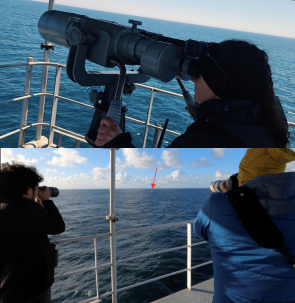
Five qualified protected species observers (PSOs) approved by regulating government agencies were independently contracted and deployed to participate in our survey. During daylight hours, PSOs keep visual watch typically from a specially designed observation tower. The tower is equipped with extremely powerful big-eye binoculars capable of detecting animals out to many kilometers and SLR cameras with zoom lenses to document observations. At the same time, as well as throughout the night, another PSO is down in the lab listening for marine mammals using a passive acoustic monitoring (PAM) system, which is a hydrophone array connected to a sophisticated compilation of sound cards and a processing unit designed to detect (and sometimes localize) different whale and dolphin species vocalizations.

If a marine mammal is detected, either visually or using PAM, the PSOs utilize all of their tools and experience to determine how far away the animal is from the vessel. If they determine that it is located within a pre-defined distance from our sound source array, we shut down our sound source.
While we are close to the coastline offshore northern Washington and Vancouver Island, where marine mammals of particular concern may be located, we also have another ship — the R/V Rachel Carson — sailing 5 kilometers ahead of us with three additional PSOs onboard, with two on watch at a time, to alert us in advance of any marine mammals they observe. These extra eyes ahead of our operations help us to detect and implement the necessary precautions for these animals.
All throughout the cruise, the PSO team documents survey operations, their monitoring effort, including the environmental conditions while they are on watch, and all of the details of their sightings, including species, detection cues, observed behavior, number of animals present and much more. Upon completion of the cruise, the PSO team submits a comprehensive final report to the regulatory agencies that authorized the project. In this way, the information we are collecting aboard the Langseth contributes to the broader understanding of protected species, such as where these animals are found at different times of the year, their population sizes, and their migration routes, furthering our knowledge about life offshore in these areas.
This cruise has given insight and opportunity to not only gather important seismic data, but also enable the PSOs, the science team, and the crew of the vessel to witness some remarkable wildlife. Below are photos of some of the animals observed so far during the expedition, during times when we are preparing equipment and with our survey underway.
Image Carousel with 6 slides
A carousel is a rotating set of images. Use the previous and next buttons to change the displayed slide
-
Slide 1: Humpback whales
-
Slide 2: Pacific white-sided dolphins detected on the PAM system (high frequency echolocation clicks).
-
Slide 3: Pacific white-sided dolphins and northern right-whale dolphins.
-
Slide 4: Western gull, fork-tailed storm-petrel, black-footed albatross, glaucous-winged gull, northern fulmar, royal tern.
-
Slide 5: California sea lion, oceanic sunfish, juvenile blue sharks, northern fur seal, adult blue shark.
-
Slide 6: Great white shark
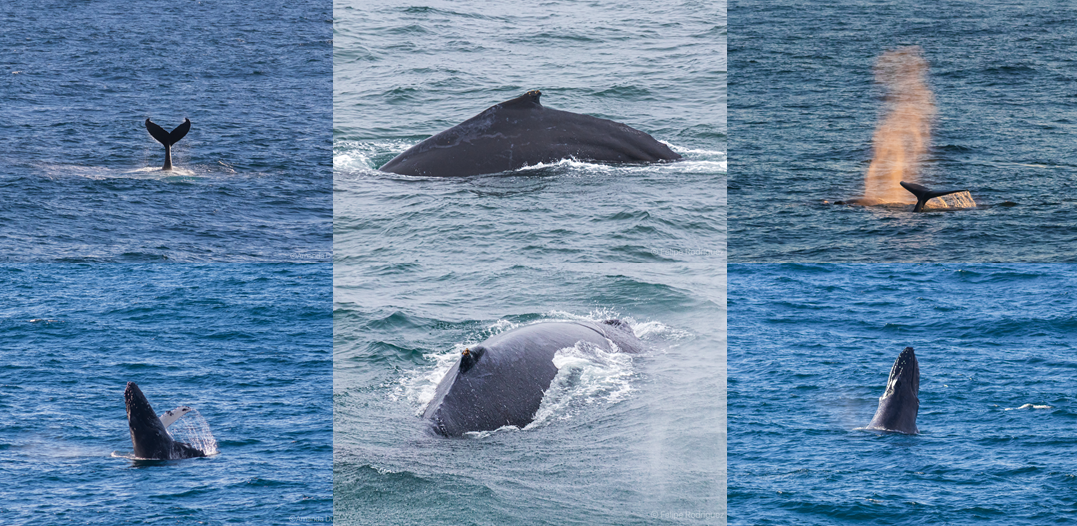
Humpback whales
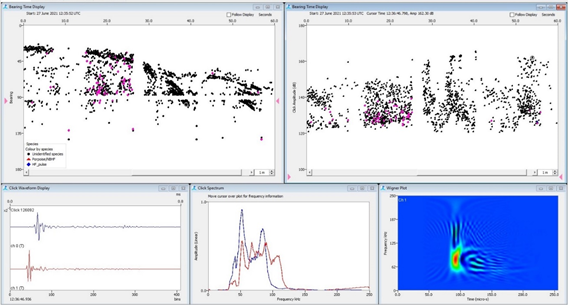
Pacific white-sided dolphins detected on the PAM system (high frequency echolocation clicks).
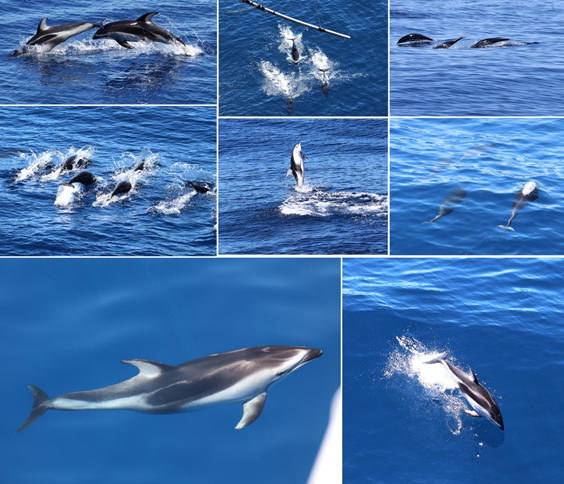
Pacific white-sided dolphins and northern right-whale dolphins.
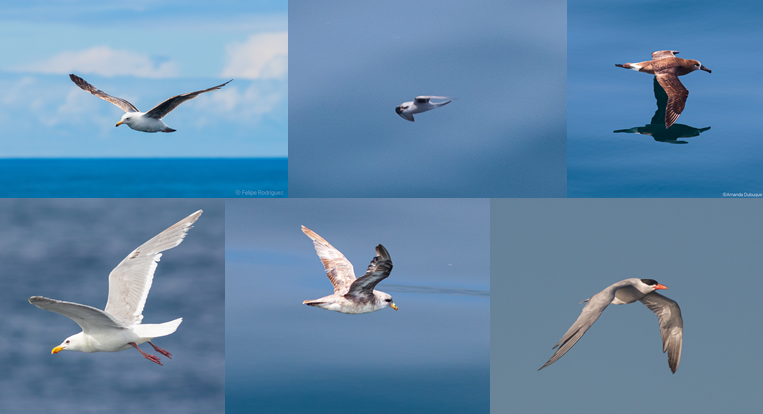
Western gull, fork-tailed storm-petrel, black-footed albatross, glaucous-winged gull, northern fulmar, royal tern.
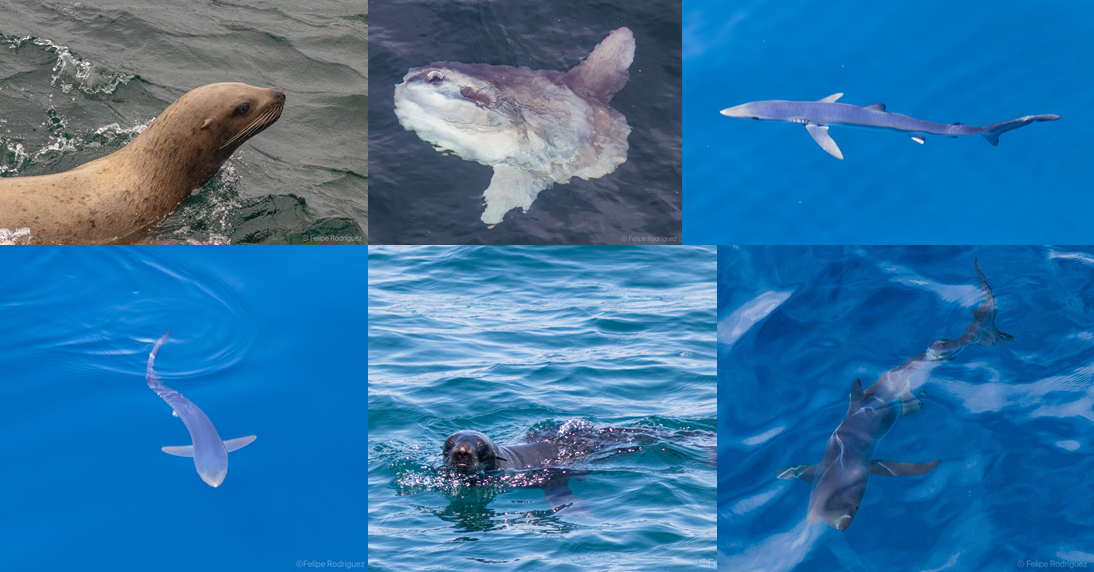
California sea lion, oceanic sunfish, juvenile blue sharks, northern fur seal, adult blue shark.
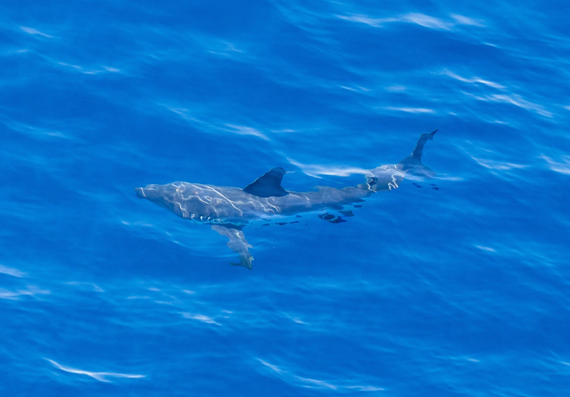
Great white shark
Photo credits: Amanda Dubuque, Cassandra Frey, Edgar Brunett, Leonardo De La Rosa, Felipe Rodriguez
